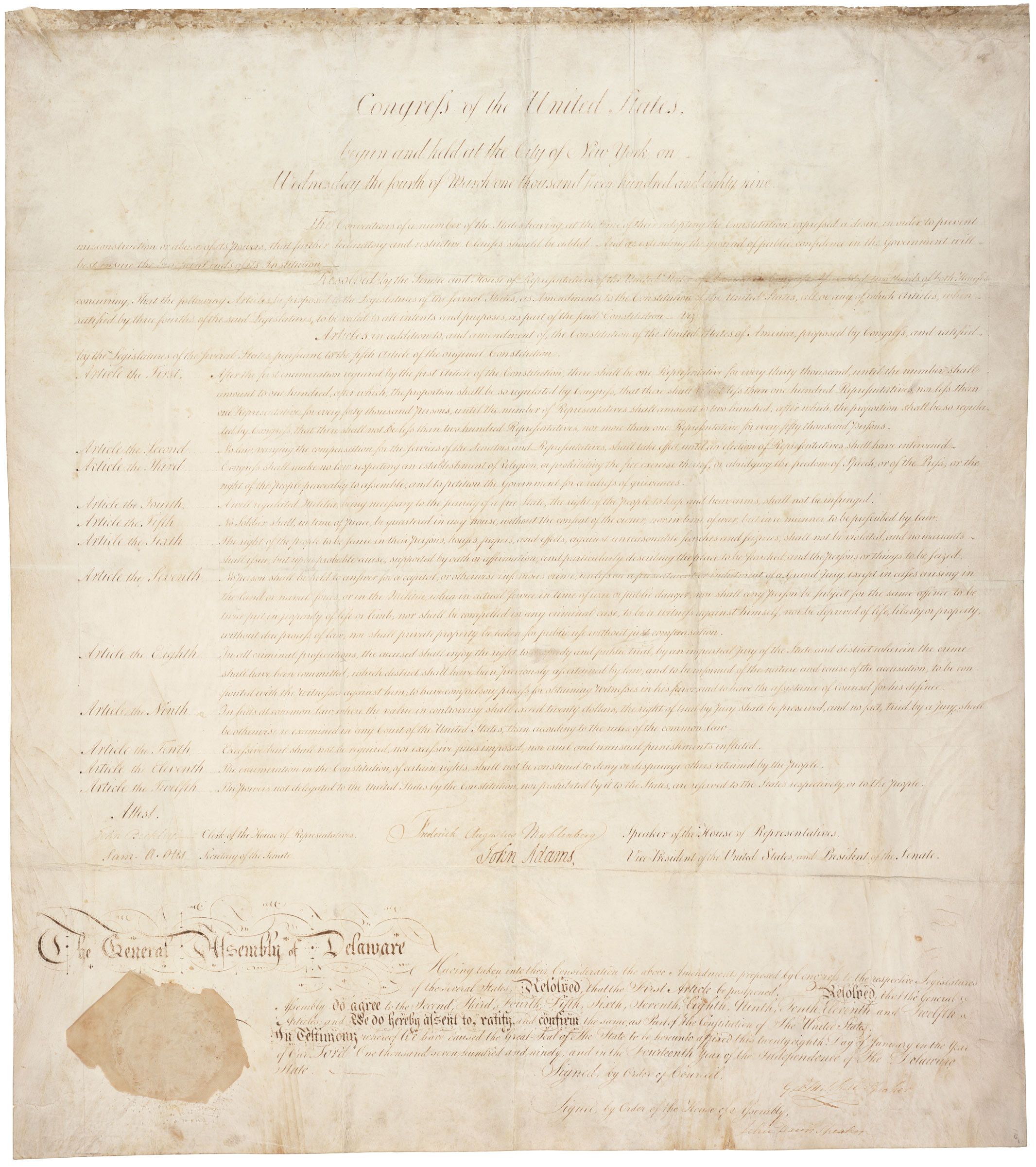Delaware's Ratification of the Bill of Rights
ca. 1/28/1790
Add to Favorites:
Add all page(s) of this document to activity:

Additional details from our exhibits and publications
On September 28, 1789, Speaker of the House Frederick Muhlenberg and Vice President John Adams signed the enrolled copy of the first proposed amendments to the new Constitution—the document later known as the Bill of Rights. The final, signed copy contained the 12 constitutional amendments that Congress proposed to the states. Shortly after it was signed, clerks created 13 additional copies, which President George Washington sent to the 11 existing states and to Rhode Island and North Carolina—which had not yet adopted the Constitution. Today, eight states still have their copies—Connecticut, Massachusetts, New Hampshire, New Jersey, Rhode Island, North Carolina, South Carolina, and Virginia. North Carolina’s copy was stolen during the Civil War but was recovered by an FBI raid in 2005 and returned to the state. When most states ratified the Bill of Rights, they sent a separate letter noting approval or disapproval of each amendment. Delaware, however, simply signed and affixed a seal to their copy of the document and sent it back. Delaware’s copy then became a Federal record.
This primary source comes from the General Records of the United States Government.
National Archives Identifier: 12237607
Full Citation: Delaware's Ratification of the Bill of Rights; ca. 1/28/1790; General Records of the United States Government, Record Group 11. [Online Version, https://docsteach.org/documents/document/delawares-ratification-of-the-bill-of-rights, April 24, 2024]Rights: Public Domain, Free of Known Copyright Restrictions. Learn more on our privacy and legal page.



